How to use MathNodes
On this page, you will find the info you need to find your way around MathNodes. We will describe the three different functionalities of our website, all three which you can explore through the dedicated buttons of our header:

1. Courses
Clicking on courses will bring you to a menu in which you can navigate through the different courses we propose here at MathNodes. It will have a succession of levels, presented like this :
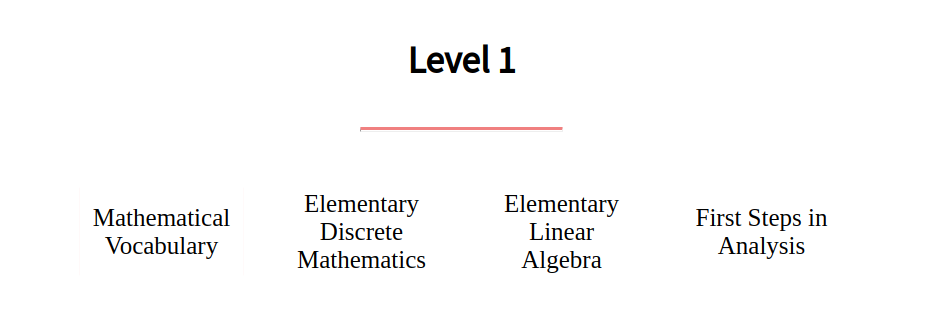
The names indicated represent course bundles, which are packs of courses treating subjects that relate to one another in some way. Click on any bundle to see a description of the bundle in question, as well as the list of courses it contains:
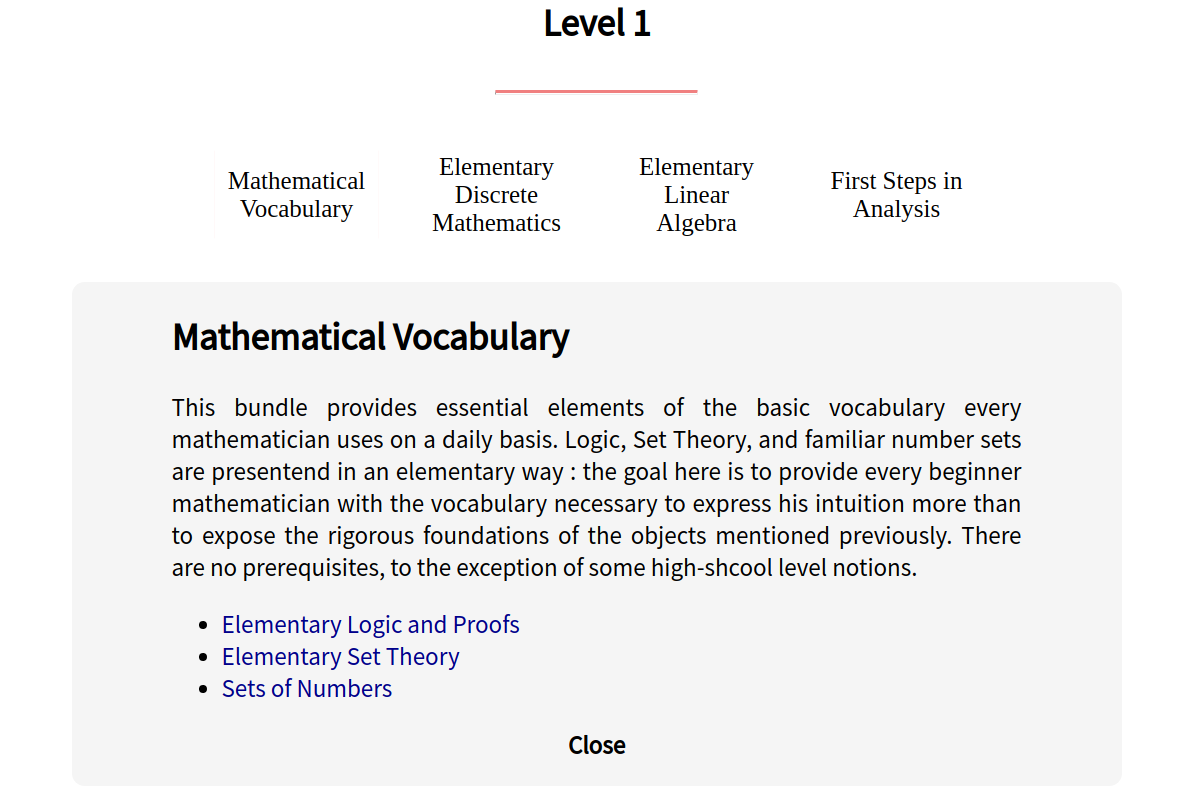
The levels indicate the mathematical advancement of the bundles under it. A higher level means a higher mathematical advancement. A bundle being level \(n\) means that it has a prerequisite of level \(n-1\) Rigorously, the level of a bundle is the level of its highest prerequisite \(+1\). Relationships between bundles are depicted in the Tree section, that we will come to shortly.
If you click on one of the blue links, you will arrive at a course page, which should contain a description of the course followed by this kind of menu:
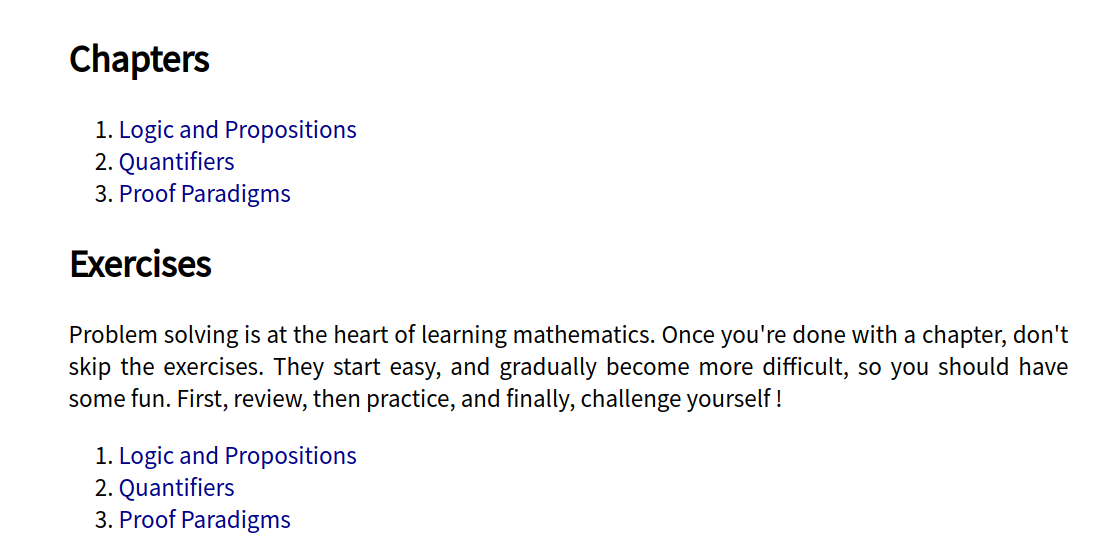
Both lists of link respectively redirect you the actual course pages and exercise sheets. This is all you need to know to access all of the courses of MathNodes !
2. Tree
Our Tree page responds to our concern of linking mathematical notions to one another in terms of prerequisites, so that you know your way around. Scroll down, and you should arrive to this figure:

This is our Tree. It displays course bundles, and a descending edge from a bundle to another means that there are courses from bundle A that are prerequisites for courses of bundle B. You can press ctrl+b or click on the button down on the left ("the bundle view button") to switch to a course view, which displays courses instead of the course bundles they represent. It is a slightly more crowded representation, but the mechanics concerning edges and prerequisites is the same.
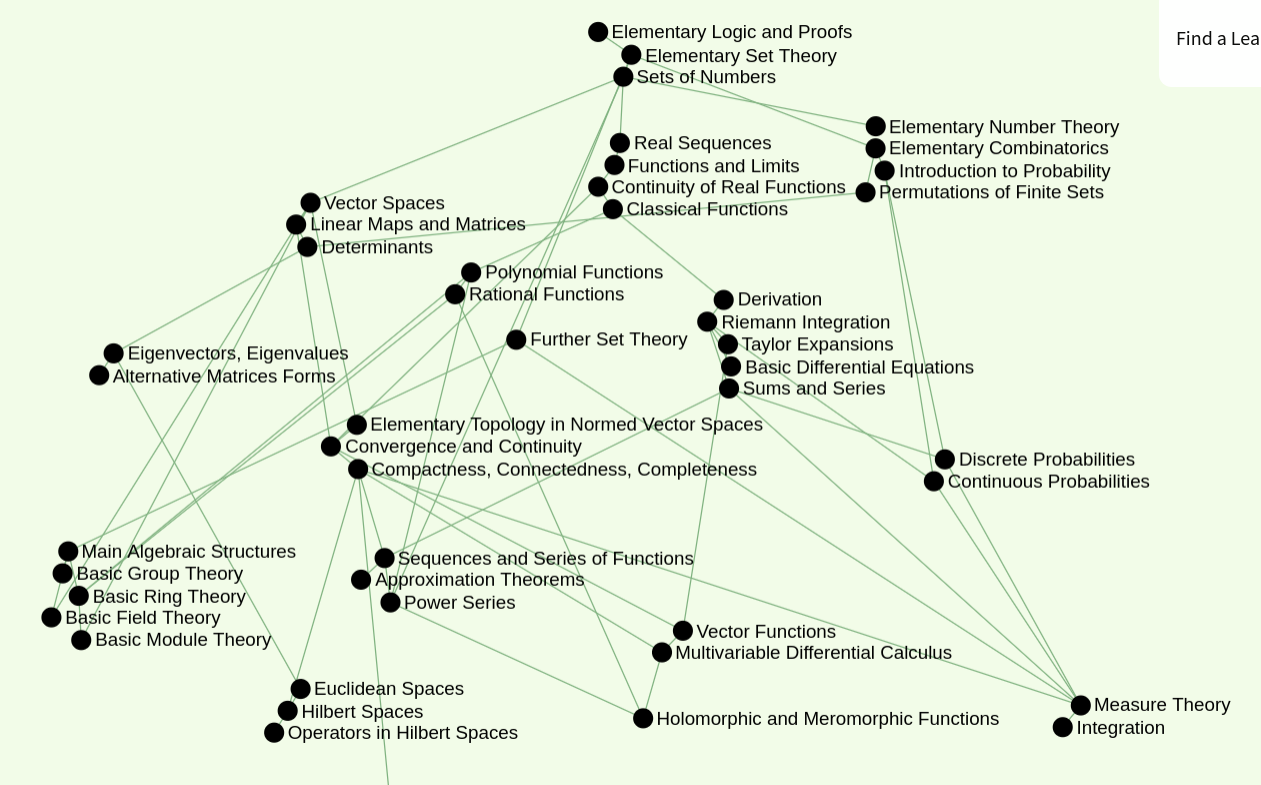
To navigate around the tree, you can zoom in and out, by dragging two fingers on your trackpad or scrolling with your mouse. You can also drag the tree around to focus on certain areas of it.
Finding information about courses with the Tree
There are two main features, of which the first is as follows: our tree contains information about the courses that you can view by clicking on the node and edges. Clicking on a node will give you a description of the course/bundle you have clicked on, while clicking on an edge in course mode only will explain why two given courses are linked. Here are screenshots of the two situations.
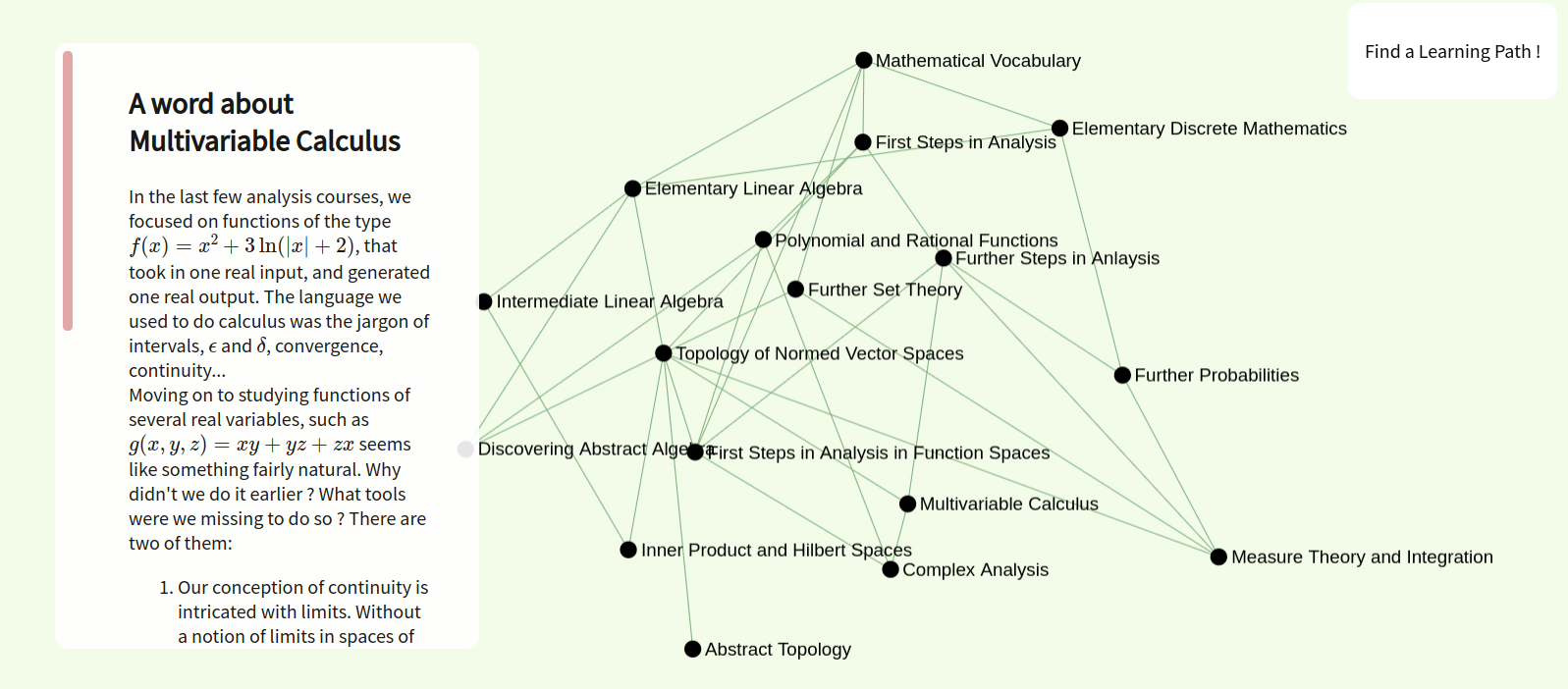

Finding a learning path with the Tree
Now, the reason why we have organized our courses as a tree is to make it easier for you to find your learning path. Suppose you come across the concept of Measure Theory and want to learn it. But it just seems so abstract! How does this relate to what you know already? What are you missing? This is the question our Tree helps you answer.
In such a situation, you can open the finding path menu by clicking on the button in the upper right corner. A menu like this one will display:
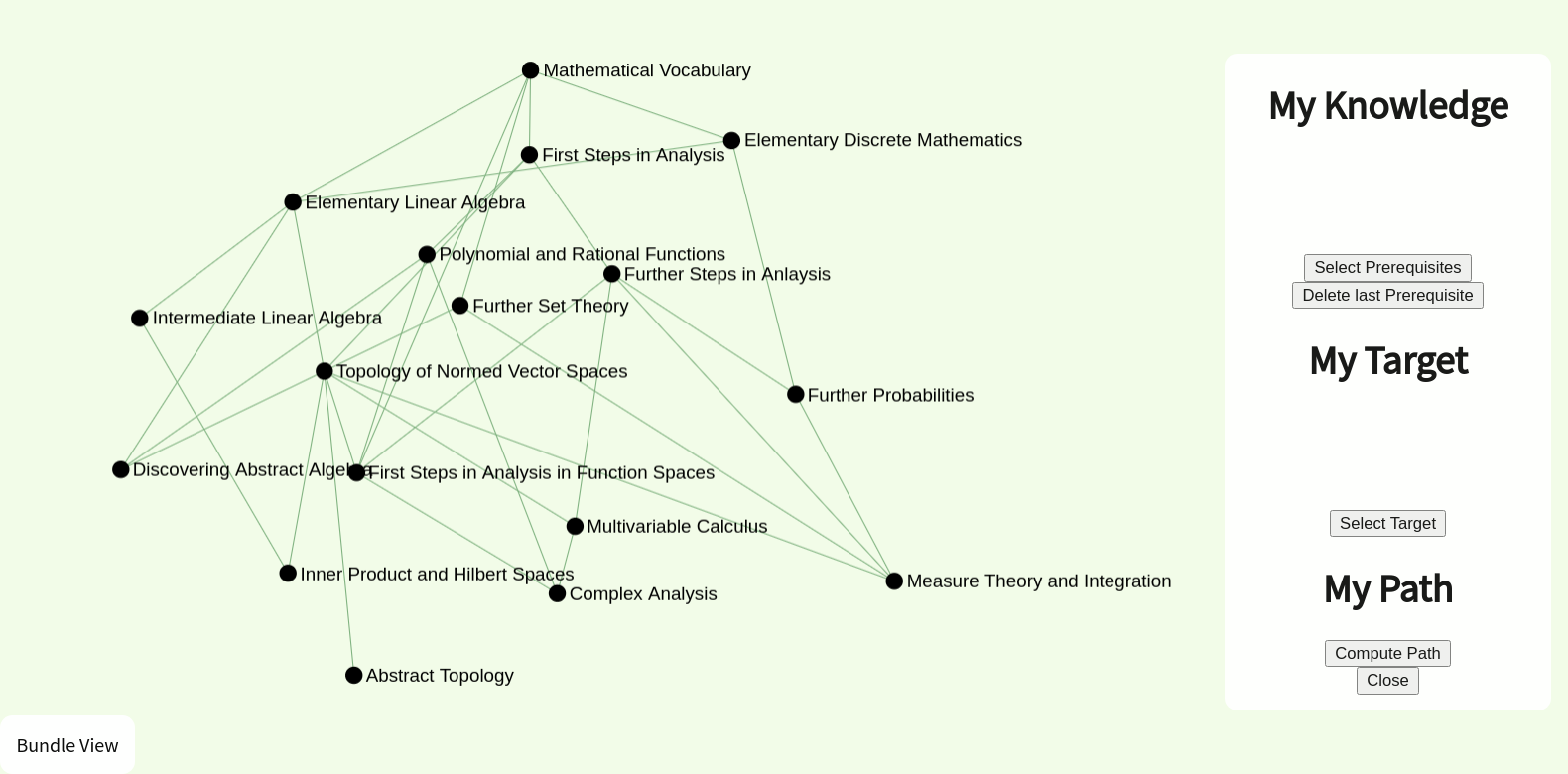
Then, click on select prerequisites, and click on the courses or bundles you already know. They will appear in red.
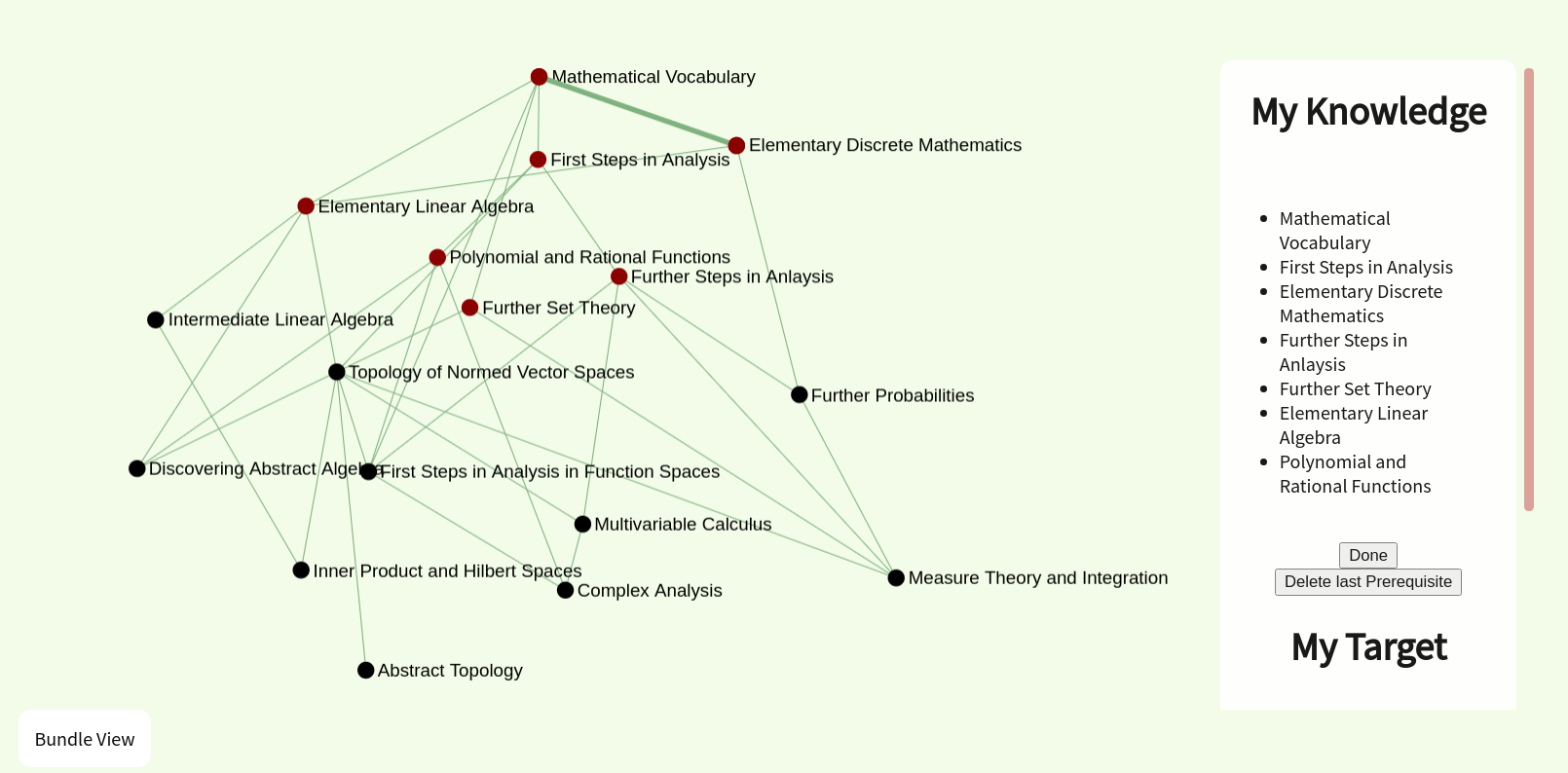
Then, click select target, and select the node you want to learn. It will appear in green.
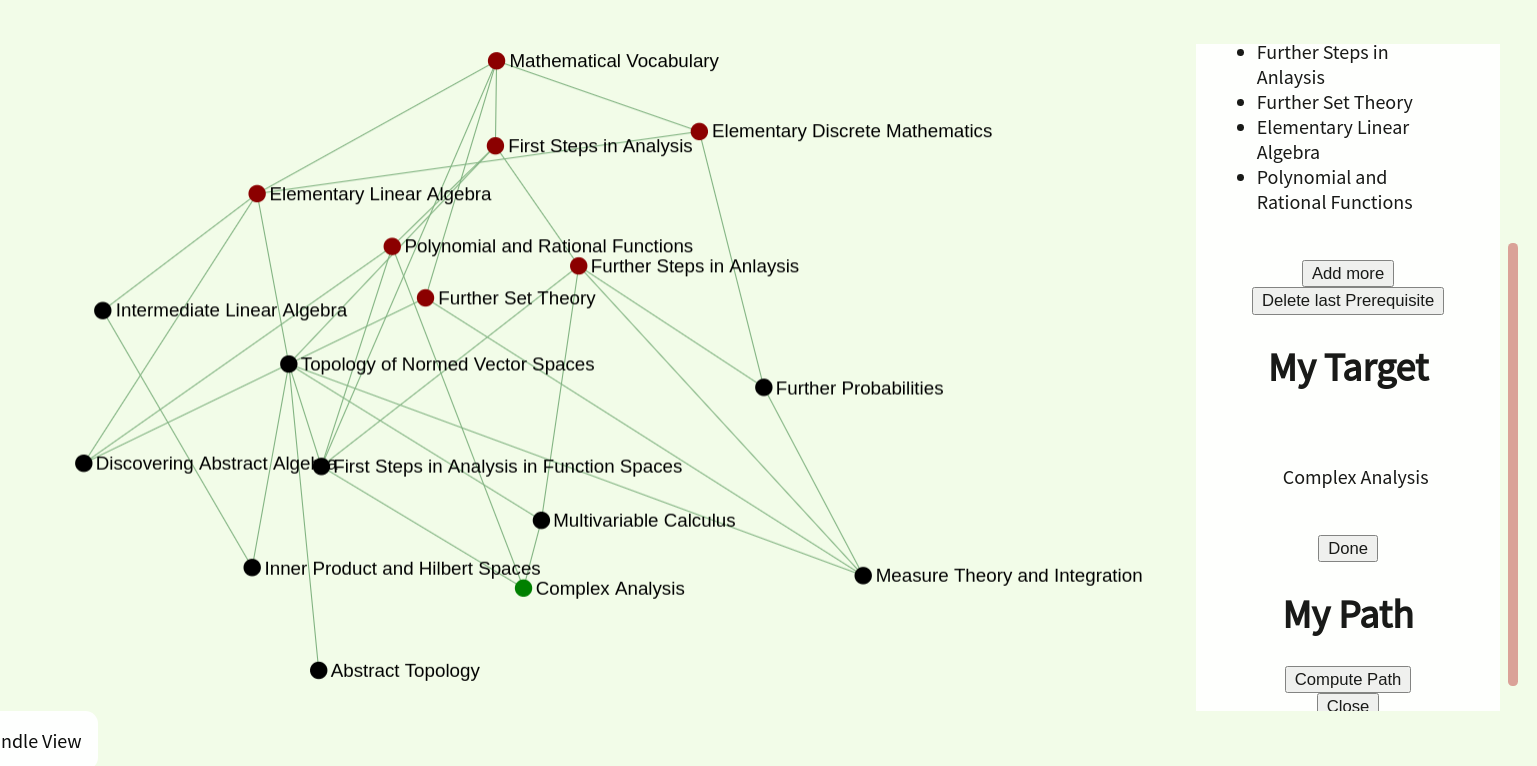
Finally, click on compute path.
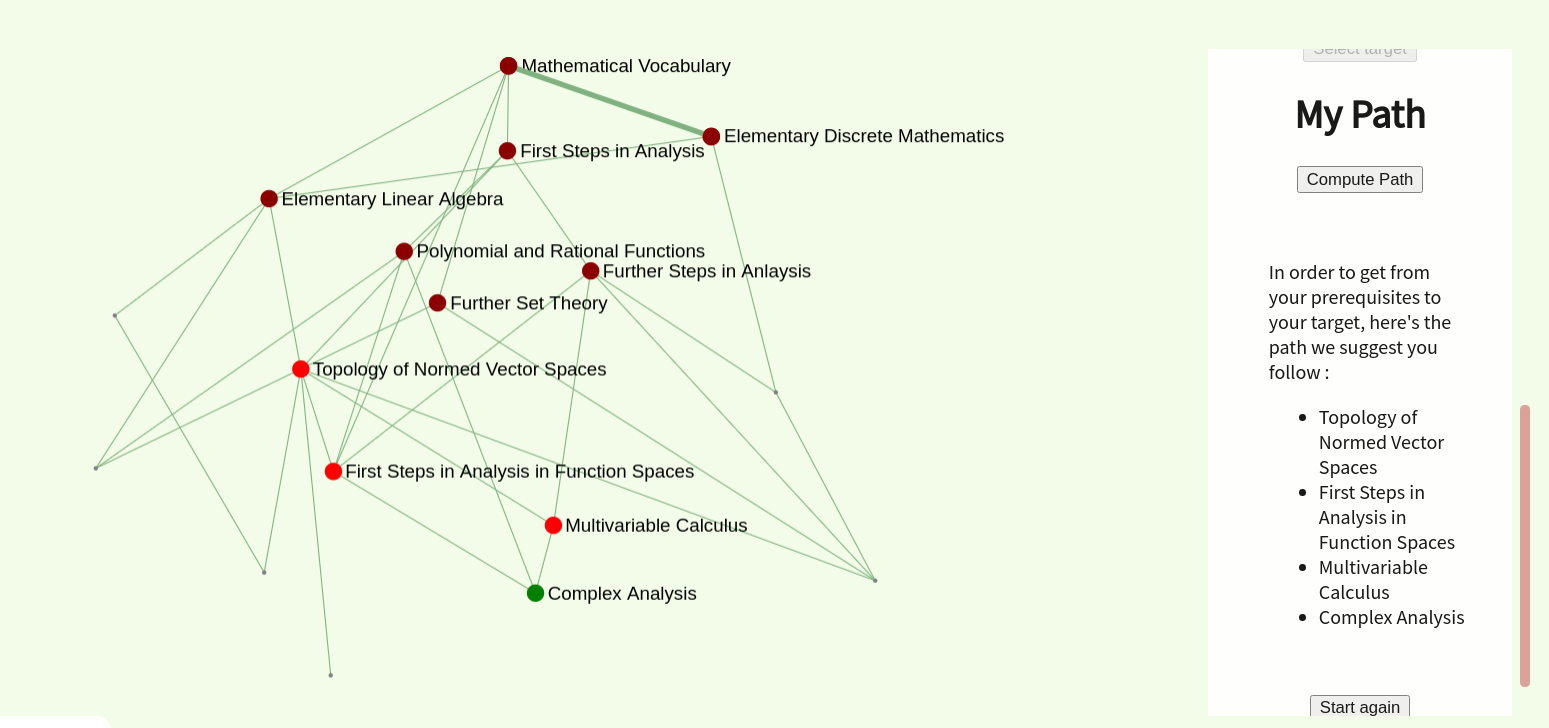
The nodes you need to learn to reach your target will be displayed in bright red, and in the finding path menu, the courses, in the order we think you should learn them, will appear.
3. Contribute
Contributions are one of the essential part of MathNodes, so making it easy to contribute has been one of our main focuses. Here's how you can do so.
Click on the "contribute" button of the header menu. You will see two buttons: a content editor, and a content mailbox.
Creating content for MathNodes
In MathNodes, courses are written in a certain language, that encodes the list of items a course page or an exercise page displays (theorems, exercises, etc). So that you do not have to learn this language (which is very inconvenient to use anyway), we made an editor, that you can access by clicking the "edit content" button.
You will then see this menu, in which we have highlighted certain areas:
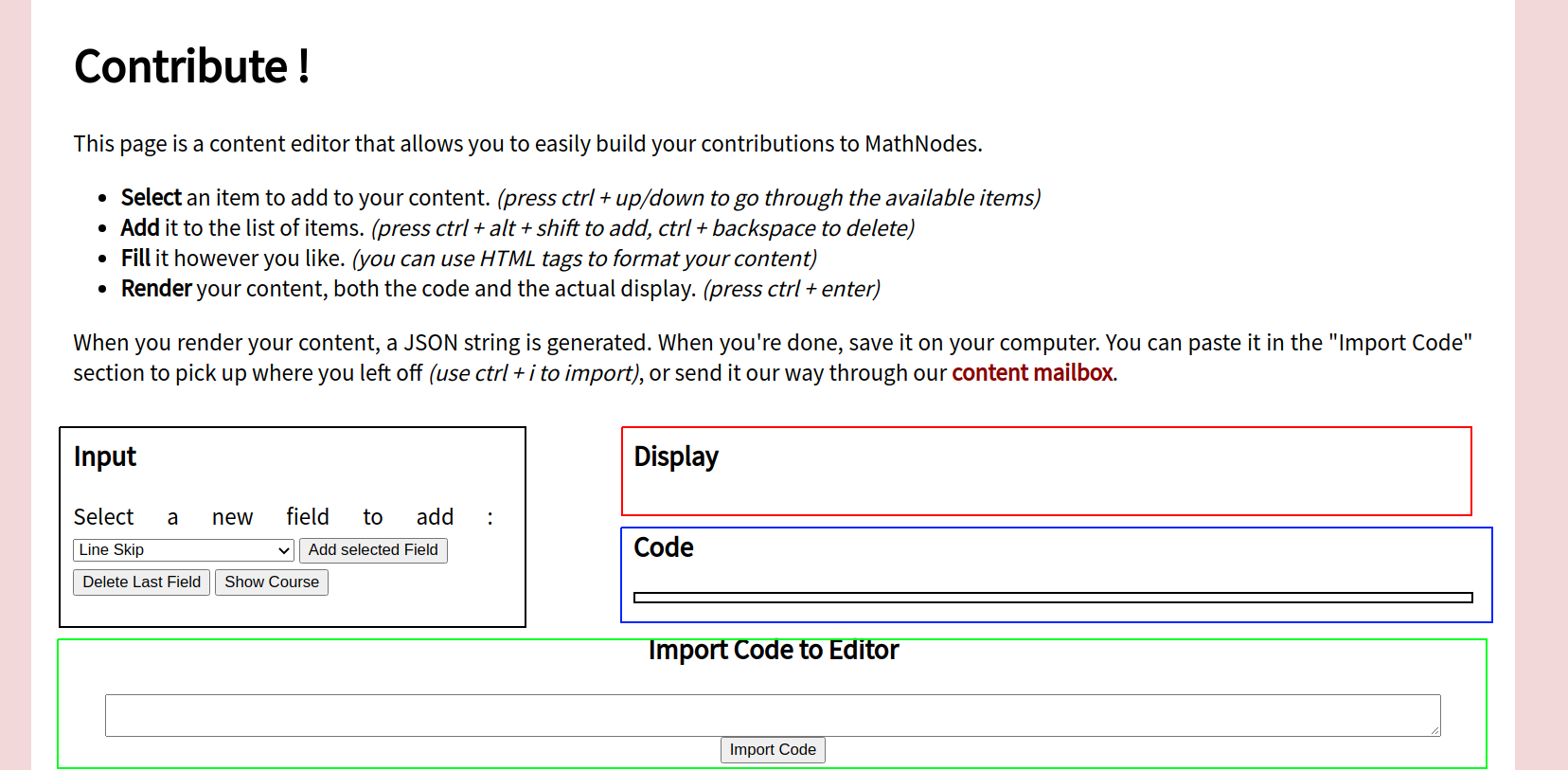
The black area is the input, the red area is the display, the blue area is the course code and the green area is the code importer. Here's how they work:
- The input: this is where you write your content. To do so, select an item from the menu below "Select a new field to add".
- The display: once your content is filled up, you may press ctrl + enter or the "Show course" button to display it. It will render as it would on any course page in the display area, and generate the course code.
- The course code: this is a strange string of characters that contains all the information of your content. It is the format the displayer reads, and under which content is stored in the database (for those of you who do a bit of programming, this code musn't seem so strange. It is nothing but a JSON string, or basically a dictionary). It displays like this:
It is useful for two reasons: saving your content and submitting it. The first point will be addressed in the next point (import code) and the second one will be addressed in the submission section.

- The code importer: this area allows you to import content code to the editor. Since MathNodes isn't at a stage where it can effectively store user-generated content yet, this is our work-around: when you display your content, the content code also generates as we saw in the previous section. You can copy it and save it permanently to your computer. We have made it so that pasting this same code in the code importer allows you to pick up your work where you left it. It works fairly intuitively.
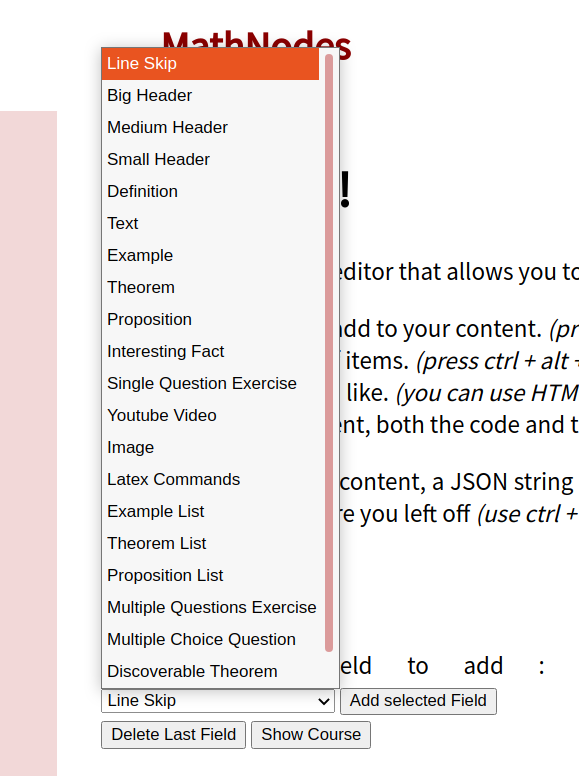
Then, add the field to the input with ctrl + alt + shift, or by clicking on the "add selected field" button. You can fill it however you like. Repeat this operation to add several fields. You can move the fields up, down, or delete them with the dedicated buttons.
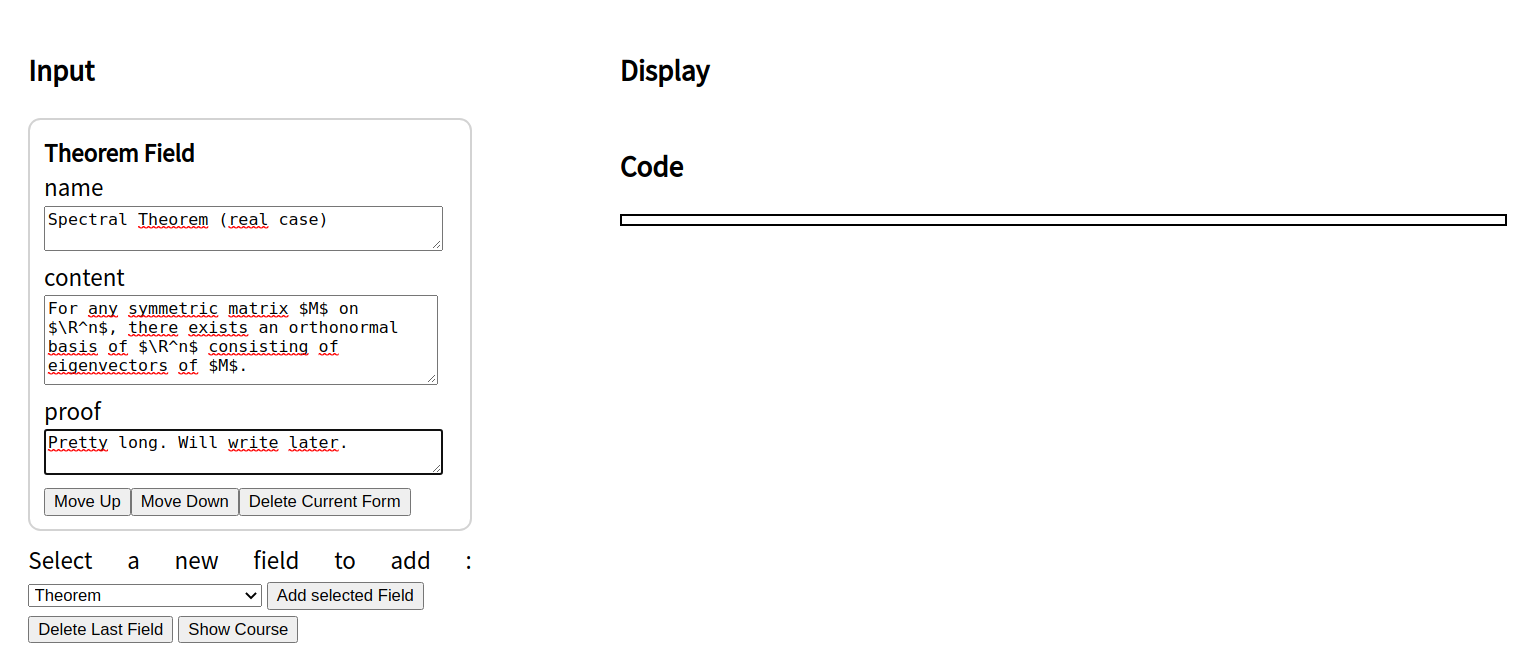
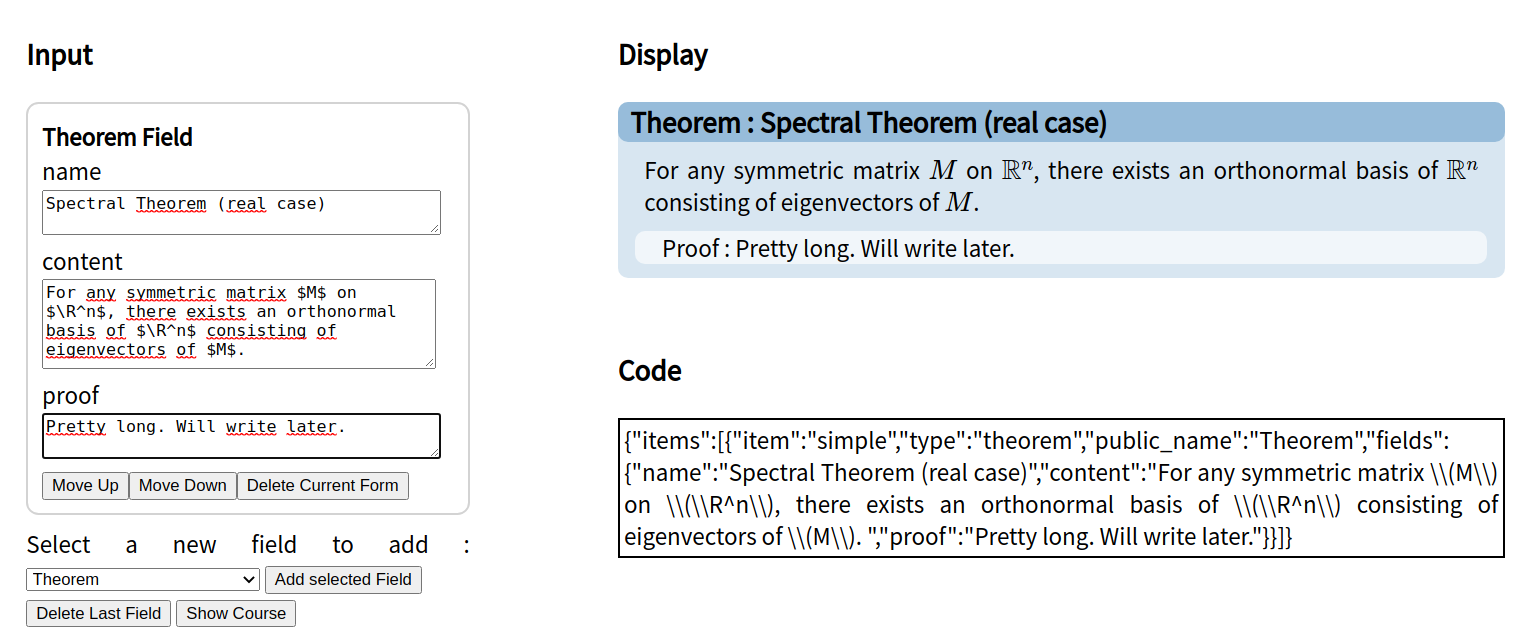

Start by pasting your code:

Then press ctrl + i or click on the "import code" button to push your code to the input area. Press ctrl + enter or "Show Course" to find your content just as you left it.
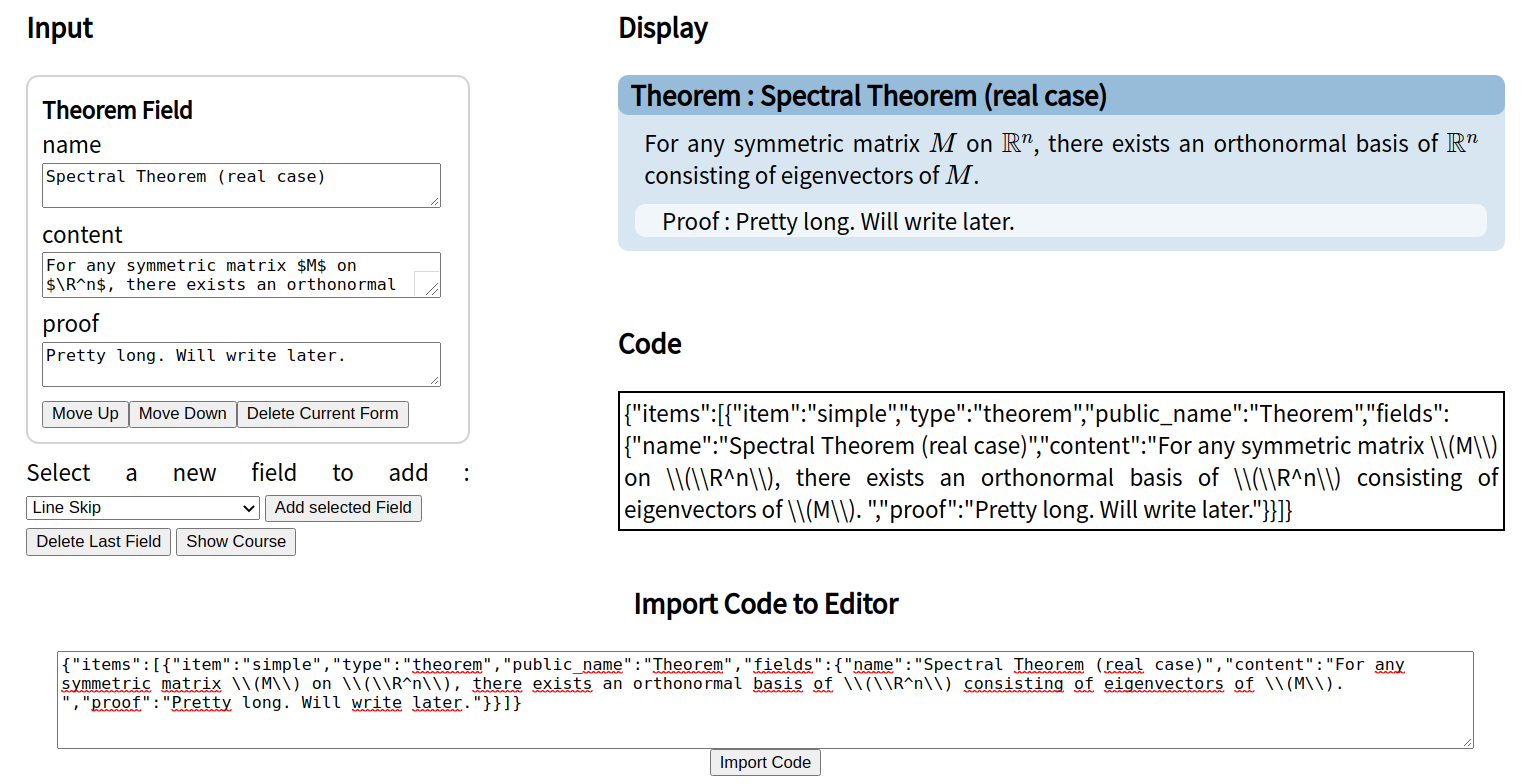
Submitting content to MathNodes
Once you're done creating your content with the content editor, keep the code somewhere. You can now send it to us. We will review it, and probably include it in one of our pages.
Our page dedicated to content submitting should look like this. The way you should fill up the different fields is fairly explicit.
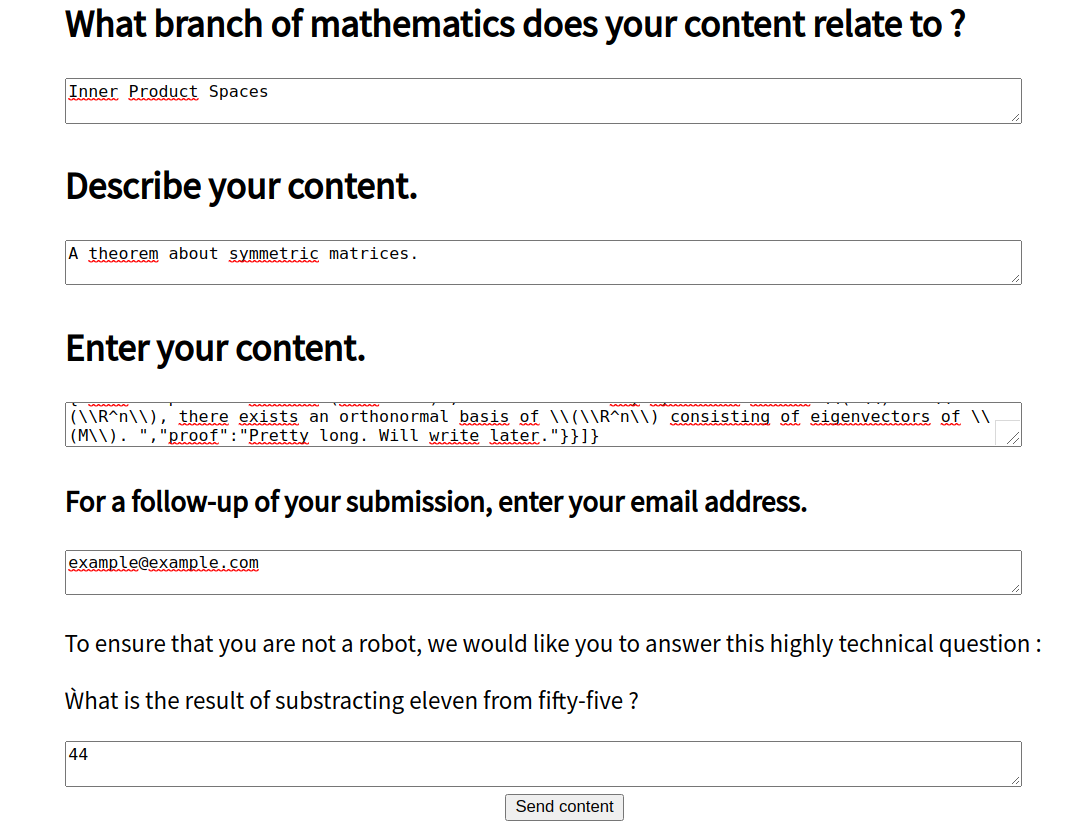
Since we are at our very beginnings, our policy concerning adding external content to MathNodes isn't fully defined for the moment. Chat with us first if you're really interested in contributing.